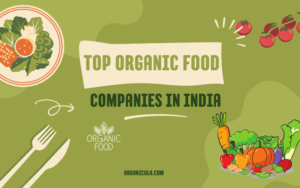A Step-By-Step Guide to Starting An OrganicFood Co-op
Starting an organic food co-op can be a rewarding and significant way to connect with others who share your interest in healthy and sustainable food. Here are the steps to help you get started:
-
Create a team:
The first step in starting an organic food co-op is to find people who share your love for organic food and sustainability. This team will help launch your co-op and help you as you move forward. Look for people with various skills, such as marketing, finance, or administrative expertise. -
Specify your goals and objectives:
Before you start your co-op, it’s essential to have a clear understanding of what you hope to accomplish. Some common goals for organic food co-ops include providing access to fresh, locally-grown organic produce, helping local farmers, encouraging sustainability, and creating a community of like-minded people. Make sure your goals are clearly defined, and everyone in your team is aligned on what you’re trying to gain. -
Research and gather information:
Research existing organic food co-ops to learn from their experiences and collect information on the laws and regulations that may influence your co-op. It will help you avoid standard hitches and perform within the legal framework. -
Develop a business plan:
A business plan is necessary for any new business, including an organic food co-op. It should include your goals and objectives, how your co-op will work, how you generate revenue, a budget, a timeline, and a marketing plan. Having a well-developed business plan will help you secure funding and attract associates. -
Secure funding:
Depending on the size and scope of your co-op, you may need to secure funding. It could come from associates, grants, loans, or other sources. Consider reaching out to local foundations, community organizations, or crowdfunding platforms for financial help. -
Find suppliers:
Your co-op will need a constant supply of organic produce to be successful. Work with local farmers to source organic crops or research companies specializing in organic food distribution. It’s necessary to establish a relationship with your suppliers so that you can ensure a consistent supply of high-quality produce. -
Establish a membership structure:
Decide on a membership fee structure that is reasonable and available to your target market. Establish membership benefits, such as discounts, priority access, or a say in the co-op’s operations. Motivate members to invite their friends and family to join and provide incentives for referrals. -
Set up a distribution system:
Determine how your co-op will distribute its food, such as through a primary pickup location or home delivery. Ensure your distribution system is efficient, reliable, and convenient for your members. -
Market your co-op:
Once it is up and running, you’ll need to reach out to possible members and promote it through word-of-mouth, social media, and other marketing channels. Consider hosting events, offering samples, and engaging with your community to spread the word about your co-op. -
Launch your co-op:
After completing all the steps, it’s time to launch your organic food co-op! Celebrate this achievement with your team and members, and keep working towards your goals and objectives. Starting an organic food co-op is a continuous process; you’ll need to adjust and grow as your co-op grows and changes.
By following these steps, you’ll be well on your way to creating a successful organic food co-op that delivers healthy, sustainable food to the community.



